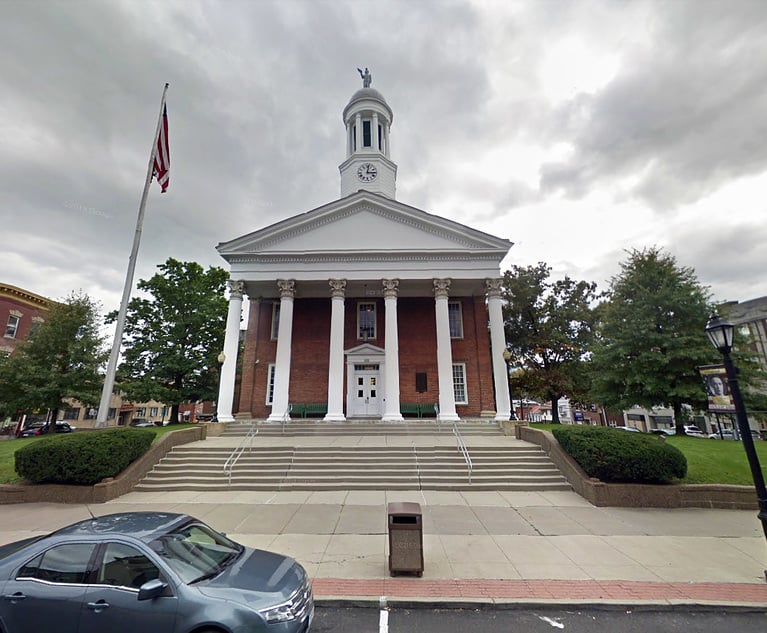 (L-R)Timothy J. Horstmann and Ryan T. Gonder with McNees, Wallace & Nurick. Courtesy photos
(L-R)Timothy J. Horstmann and Ryan T. Gonder with McNees, Wallace & Nurick. Courtesy photos Inflation Reduction Act: A Game Changer for Pennsylvania Clean Energy Projects
The Inflation Reduction Act, Public Law 117-168 was signed into law by President Joe Biden on Aug. 16, 2022, but the impact of some of its provisions is just beginning to be felt. Among those are the substantial federal subsidies the act provides for state and local government investments in clean energy projects.
February 06, 2024 at 09:21 AM
7 minute read
EnergyThe Inflation Reduction Act, Public Law 117-168 was signed into law by President Joe Biden on Aug. 16, 2022, but the impact of some of its provisions is just beginning to be felt. Among those are the substantial federal subsidies the act provides for state and local government investments in clean energy projects. These subsidies are provided through a change in the rules for clean energy tax credits, which will allow state and local governments to take a direct payment in lieu of the tax credit. While the amount of the direct payment for a qualifying project will vary, there is potential for some projects to qualify for a direct payment equal to 70% of the project cost.
Before the passage of the act, clean energy tax credits could only be used to offset a credit recipient's federal income tax liability. State and local governments were ineligible for credits, as they do not pay federal income tax, and therefore would be required to pay the full cost of any clean energy project. A common workaround was for the government to partner with a tax-paying business to obtain essentially a pass-through of the economic benefit of the tax credit. With the passage of the act, which applies to projects placed in service after Dec. 31, 2022, a state or local government can directly receive the economic benefit of the credit. Eligible entities include states, their political subdivisions, and their agencies and instrumentalities, as well as public school districts.
This content has been archived. It is available through our partners, LexisNexis® and Bloomberg Law.
To view this content, please continue to their sites.
Not a Lexis Subscriber?
Subscribe Now
Not a Bloomberg Law Subscriber?
Subscribe Now
NOT FOR REPRINT
© 2025 ALM Global, LLC, All Rights Reserved. Request academic re-use from www.copyright.com. All other uses, submit a request to [email protected]. For more information visit Asset & Logo Licensing.
You Might Like
View All
Superior Court Directs Western Pa. Judge to Recuse From Case Over Business Ties to Defendant
3 minute read
Judge Rejects Exxon Mobil's Challenge to $725M Benzene Verdict, Adds $91M in Delay Damages
3 minute read
Exxon Mobil Claims Juror's Online Posts Show Bias Behind $725M Benzene Verdict
4 minute read
Law Firms Mentioned
Trending Stories
Who Got The Work
J. Brugh Lower of Gibbons has entered an appearance for industrial equipment supplier Devco Corporation in a pending trademark infringement lawsuit. The suit, accusing the defendant of selling knock-off Graco products, was filed Dec. 18 in New Jersey District Court by Rivkin Radler on behalf of Graco Inc. and Graco Minnesota. The case, assigned to U.S. District Judge Zahid N. Quraishi, is 3:24-cv-11294, Graco Inc. et al v. Devco Corporation.
Who Got The Work
Rebecca Maller-Stein and Kent A. Yalowitz of Arnold & Porter Kaye Scholer have entered their appearances for Hanaco Venture Capital and its executives, Lior Prosor and David Frankel, in a pending securities lawsuit. The action, filed on Dec. 24 in New York Southern District Court by Zell, Aron & Co. on behalf of Goldeneye Advisors, accuses the defendants of negligently and fraudulently managing the plaintiff's $1 million investment. The case, assigned to U.S. District Judge Vernon S. Broderick, is 1:24-cv-09918, Goldeneye Advisors, LLC v. Hanaco Venture Capital, Ltd. et al.
Who Got The Work
Attorneys from A&O Shearman has stepped in as defense counsel for Toronto-Dominion Bank and other defendants in a pending securities class action. The suit, filed Dec. 11 in New York Southern District Court by Bleichmar Fonti & Auld, accuses the defendants of concealing the bank's 'pervasive' deficiencies in regards to its compliance with the Bank Secrecy Act and the quality of its anti-money laundering controls. The case, assigned to U.S. District Judge Arun Subramanian, is 1:24-cv-09445, Gonzalez v. The Toronto-Dominion Bank et al.
Who Got The Work
Crown Castle International, a Pennsylvania company providing shared communications infrastructure, has turned to Luke D. Wolf of Gordon Rees Scully Mansukhani to fend off a pending breach-of-contract lawsuit. The court action, filed Nov. 25 in Michigan Eastern District Court by Hooper Hathaway PC on behalf of The Town Residences LLC, accuses Crown Castle of failing to transfer approximately $30,000 in utility payments from T-Mobile in breach of a roof-top lease and assignment agreement. The case, assigned to U.S. District Judge Susan K. Declercq, is 2:24-cv-13131, The Town Residences LLC v. T-Mobile US, Inc. et al.
Who Got The Work
Wilfred P. Coronato and Daniel M. Schwartz of McCarter & English have stepped in as defense counsel to Electrolux Home Products Inc. in a pending product liability lawsuit. The court action, filed Nov. 26 in New York Eastern District Court by Poulos Lopiccolo PC and Nagel Rice LLP on behalf of David Stern, alleges that the defendant's refrigerators’ drawers and shelving repeatedly break and fall apart within months after purchase. The case, assigned to U.S. District Judge Joan M. Azrack, is 2:24-cv-08204, Stern v. Electrolux Home Products, Inc.
Featured Firms
Law Offices of Gary Martin Hays & Associates, P.C.
(470) 294-1674
Law Offices of Mark E. Salomone
(857) 444-6468
Smith & Hassler
(713) 739-1250





